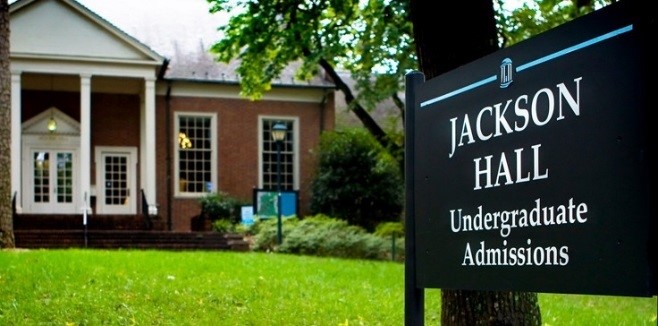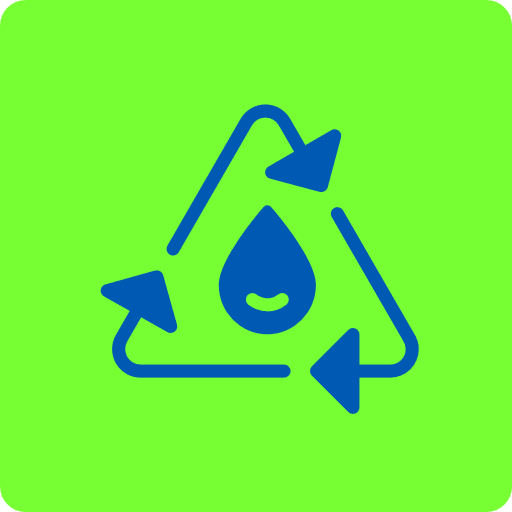How the Use of Reclaimed Water Can Help Conserve Millions of Gallons of Water Every Year.
Post by Ryan Rinehart
Ryan is a fellow in the 2018 Leaders in Environment and Finance (LEAF) program. As part of this fellowship, Ryan spent summer 2018 assisting UNC Energy Services in evaluating irrigation supply options to expand the reclaimed water mains at UNC-Chapel Hill to help reduce the school’s potable water intake and reduce expenditure on utility services.
It’s no news to readers of the Environmental Finance Blog that clean water is a precious, finite resource. During the years 2001-2002 and 2007-2008, North Carolina experienced the worst droughts ever recorded in state history. After the severe drought in 2001-2002, the University of North Carolina at Chapel Hill partnered with the Orange Water and Sewer Authority (OWASA) to evaluate the feasibility of using reclaimed water at UNC-Chapel Hill, resulting in a partnership to build a reclaimed water system.
The reclaimed water treatment facility is located at the OWASA wastewater treatment plant, and a pipeline to campus allows the University to reduce the use of potable water for non-potable uses, and leave more potable water for human consumption. But what is reclaimed water and how can it benefit a community?
The Purpose of Reclaimed Water
Reclaimed water is a form of highly treated wastewater, so clean that it is impossible to tell the difference with the naked eye. Reclaimed water, however, is not quite up to drinking water standards, but can take the place of potable water for several water-based functions, including irrigation, toilet flushing, and laundry facilities. In the past, the University has used clean drinking water for non-drinking functions, such as for irrigation of turf and grass around campus.
Reclaimed water can replace potable water for these functions, saving millions of gallons of potable water from being wasted on non-drinking water functions. In 2006, the University and OWASA signed a contract for construction and operation of the water reuse system. In 2008, the reclaimed water pipeline was established and built on campus, allowing for millions of gallons of reclaimed water to be pumped directly from the wastewater treatment plant to campus for use at athletic fields on campus, kick-starting the use of reclaimed water at the University in 2009.

Reclaimed water lines, colloquially known as “purple pipes” are colored purple to denote the type of water transported within the pipes. (Photo Credit: Sonoma County Water Authority).
Expanding the Line
After the reclaimed water line was completed, weaving its way through campus and connecting previously major potable water users, there was further discussion on whether or not the pipeline could be, and should be, expanded even further.
After an initial investigation of water use on campus, the idea of evalu
ating expanding the current
reclaimed water line became a reality, and the investigation revealed that there were several piec
es of land that still used potable water for irrigation purposes. As a result, a study was created to analyze the cost of connecting these irrigation sites to the reclaimed water line on campus, and whether or not the total amount of potable water saved was worth the cost of constructing a pipeline that would connect the irrigation sites to the reclaimed water line.

Jackson Hall, where UNC-Chapel Hill’s Office of Undergraduate Admissions is located, sits on one of the irrigation sites that still uses potable water. The hope is to connect this irrigation site to the reclaimed water pipeline (Photo Credit: The University of North Carolina at Chapel Hill)
What are the benefits of reclaimed water?
Using reclaimed water as a form of water reclamation and conservation is just one prime example of how a city can improve its carrying capacity and resiliency. With the population of the Chapel Hill and Carrboro area quickly increasing, it is crucial to constantly have a steady and reliable potable water supply.
By switching systems that currently use potable water to reclaimed water, where appropriate and safe for public health, millions of gallons of drinkable water can be reserved exclusively for drinking water purposes. This can help to improve a municipality’s resiliency, strengthening the ability to recover from a catastrophe, such as a severe storm or weather event, water line break, or water shortage.
Using reclaimed water for non-drinking water functions ensures that clean drinking water is used for just that: drinking. Should another severe drought occur like the those in 2001-2002 and 2007-2008, University residents and the surrounding Chapel Hill community would still have steady access to a supply of clean drinking water, without having to worry about shutting down irrigation to conserve the drinking water supply.
Reclaimed water not only has the environmental benefit, but a financial benefit as well. Since reclaimed water is billed at a lower rate per kilogallon than potable water, a municipality could have the potential of saving thousands of dollars every year by switching from potable to reclaimed water where feasible. During the investigation of campus water usage, a construction cost estimate calculated reclaimed water line expansion projects to require anywhere from $100,000 to more than $1,000,000, based on the length of the pipeline needed, environmental and infrastructure obstacles, and the amount of water used. While that range may seem like a hefty price tag, the financial benefits of switching to reclaimed water will make up for the initial cost in the long run.
Reclaimed water usage can be a crucial turning point for countries, cities, and towns suffering from potable water shortages, as it allows for machines that require water to continue to operate normally, while not wasting drinking water. After bringing the reclaimed water line online in 2009, the University and OWASA-served community are better equipped to handle and recover from severe water shortage events, as millions of gallons of potable water have been diverted from non-drinking water purposes, saving valuable resources.
Ryan Rinehart is a student at the University of North Carolina at Chapel Hill, majoring in Environmental Science and double-minoring in Statistics and Geography. His areas of experience include energy and water analytics, with his research focusing specifically on utility rates analysis and water conservation.





I really like this reclaim water concept, This way we can save much more drinking water and can provide remaining part of drinking water to needy and I think using this reclaimed water don’t have any side effects.
This is a good option for every country. Reclaiming water is a really a great idea to save a lot of water and will provide clean drinking water to every country. Keep on making such innovation to make this world a better one.